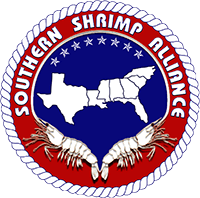The Southern Shrimp Alliance has introduced a new feature to our website today that I am excited about. A big red button on the home page will take you to our “Know Your Supplier“ page. On it, you will find links to public information released by food regulatory agencies from around the world.
There is a lot of information available that allows us to objectively evaluate claims that farmed seafood is contaminated with harmful antibiotics and fungicides. The difficulty has been, at least for us, accessing that information. The “Know Your Supplier“ page is our response.
So, whether you are a importer, distributor, retail or restaurant business that carries seafood, a seafood consumer that cares about what you are eating, or a shrimper that wants to know if what people are telling you is true, the “Know Your Supplier“ page guides you to government websites where you can review information first hand. This useful tool lets you find out whether a supplier has a history of problems with contaminated seafood exports.
The page links to two parts of U.S. Food and Drug Administration’s website, the first providing all of the current Import Alerts issued by the FDA and the second to listings of the FDA’s refusal actions. The refusal information gives you the name of the exporter, the product involved, the FDA District Office responsible, and the reason for the refusal.
For example, if you click on “Product” below the “View Import Refusal By” heading, then click on “November 2011,” and then click on “Fishery/Seafood Prod,” you will be taken to a listing that shows that the Atlanta District Office of the FDA refused four shipments of shrimp from the Malaysian exporter Kian Huat Aquaculture Sdn. Bhd. for the presence of nitrofurans. (We’ve monitored Kian Huat’s shrimp exports for some time and no one should be surprised that the response of importers has been to bring Kian Huat’s shrimp through a port other than Savannah).
The page also links to the Canadian Food Inspection Agency‘s search page for the agency’s Mandatory Inspection List (MIL). This one is a little easier to navigate, as you use the drop down menu at “Country/Economy” to get a listing of exporters that are currently on MIL and the reason for their inclusion. For example, if you clicked on “India” today, you would see that the Indian shrimp and seafood exporter M/S Suryamitra Exim (P) Ltd. was added to the MIL on July 15, 2011 for the detection of nitrofurans in its exports, with the most recent rejection occurring on August 31, 2011.
There is a link to Japan’s Imported Foods Inspection Services Home Page. The Ministry of Health, Labour and Welfare’s page is a great resource. The page already has up a listing of January 2012 rejections – of which there were 62 listed. Eleven of those rejections are for shrimp from Vietnam because of the detection of either enrofloxacin or chloramphenicol in the shrimp. Almost all of the exporters are familiar as companies that also ship shrimp to the United States.
There is a link to the Swiss government‘s list of protective measures they have taken with respect to particular countries and a “Stop & Test” list of the exporters that they are applying additional scrutiny to. The list of countries tells us, for example, that Switzerland requires enhanced testing measures on shrimp imports from Bangladesh, China, Indonesia, India, and Myanmar. The companies listed on the “Stop & Test” list provides dozens of more examples of shrimp products exported contaminated with nitrofurans or chloramphenicol.
And there is a link to the European Union’s Rapid Alert System for Food and Feed (RASFF) as well as searchable database of the EU’s inspection reports from overseas visits. The RASFF listings do not provide information on the individual shippers, but do give you a summary of what problems have been detected with shrimp imports (which can be reviewed by selecting “crustaceans and products thereof” in the product category box). A check now, for example, shows that the EU rejected two shipments of shrimp from India for the presence of nitrofurans in the last two months. The inspection reports also provide interesting insight into aquaculture production throughout the world. A recent report on Bangladesh, as just one example, found that the government had little control over the fish and shrimp feed sector which undermined their ability to keep antibiotics out of seafood exports.
I would encourage you to spend some time looking at these resources.
We will continue to add material. At the moment, Richard Vendetti (SSA Field Director) is working with state governments to update the state testing results. When we have enough together, we will post the new information (including a report from the Alabama government indicating that from 2002 to 2010, 42% of the imported seafood they sampled tested positive for contaminants).
I strongly encourage anyone that purchases or consumes imported seafood to take advantage of the information provided on our website.
As always, please let us know what you think. I welcome any ideas on how the site can be improved.
John Williams
Executive Director
Southern Shrimp Alliance
